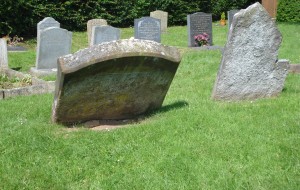On Midsummer's Day (24th June) 1806, the village of Oddingley was witness to a gruesome murder. It was only decades later that the full chain of events came to light, when a second body was found. On these pages, you can find out more about the Oddingley murders, which provoked a storm of interest nation-wide at the time and continue to attract great interest to this day.
24th June 1806
At around five o' clock in the afternoon on the long summer's day that marked the feast of St John the Baptist - Midsummer's Day - in the year 1806, reverend George Parker of Oddingley parish was heading across a field to fetch his herd of cattle when he was suddenly met by an unexpected figure, clothed in a thick leather coat despite the heat of the day. Without warning, the stranger drew a shotgun from the coat and shot the parson, who let out a yell of pain and panic, falling to the ground. But the assailant, not willing to risk his survival, picked up a large stick from the ground and began to bludgeon the dying priest upon the head.
Two butchers by the names of Giles and Lynch, though, who had been walking along the lane beside the field on their way from Worcester to Droitwich, had heard Parker's cry, and were now approaching the scene. The murderer dropped the stick and fled across the fields. Giles leapt after him in pursuit, whilst Lynch returned to Oddingley to seek help, leaving the parson alone in the field as his life ebbed away. Giles was forced to give up the chase when the murderer turned the barrel of the gun towards his pursuer and threatened him. So it was that Parker died, and the culprit vanished into the countryside, seemingly heading towards Worcester.
The Hunt for the Truth
Although the fact of the murder itself was clear, there remained many unanswered questions as the news spread that evening. Giles and Lynch were strangers in the village, and could not identify the murderer, whose motive and whereabouts remained unclear. The village had been particularly empty that day because many of the farmers had gone to the Midsummer fayre in Bromsgrove, a few miles away, which perhaps the murderer had tried to use to his advantage, not expecting that there would be travellers on the road happening upon his foul crime before he had had chance to escape.
The local authorities acted quickly to try to apprehend the culprit. Although the rule of law was enforced on a more local scale in those days and communications were much less rapid than today, word was brought of the deed as quickly as possible to Worcester and to other areas to which it was thought he might have fled, and the description of Giles and Lynch was circulated. Soon, even major ports were alerted to watch out for this man and prevent him from fleeing abroad. From the description, a local tradesman, Richard Heming, was deduced to be a likely suspect for the crime, and indeed was found to have disappeared.
Despite a long search over the coming days and weeks, Heming could not be found. The murder, taking place as it did in such a quiet and picturesque corner of the countryside, shocked the public, and the story was followed with interest by national news outlets. Nobody, however, could find any trace of the fugitive assassin. His motive, however, was not difficult to deduce. Parker had not been popular with the majority of the farmers in Oddingley.
According to laws dating back to medieval times, the income of each country parson was to be provided either by tithe - whereby the local farmers would give to him one tenth of their produce - or through an annual payment amounting to the same value in money. By 1806, the collection of tithes had all but disappeared in England and the monetary payment become the universal source of parsons' incomes. But at Oddingley, the payment expected of each farmer had for many decades been fixed at a level that had by now fallen well below the value of one tenth of their crop. Parker, arriving in the parish just a few years before, had demanded that the payment be increased. When the farmers refused, he exercised his ancient right to collect the tithe instead, a move that would have been unprecedented for many decades.
Naturally, the farmers had been incensed at this, but had little choice but to hand over cereal and animal produce, up to one tenth its total value, to Parker at his request. They must have sought for a way out of this predicament, and made little secret of the fact that the parson's death filled them with little sorrow. It seemed clear that somebody amongst them must have paid Heming, who had performed odd jobs for many different people over the years, travelling from place to place to find work, to murder Parker. However, with no obvious trace of him remaining, no evidence could be found that this theory was true. There were several farmers in Oddingley at that time, any one of whom could have employed Heming, including Thomas Clewes of Netherwood farm, John Barnett, George Banks and Captain Evens.
